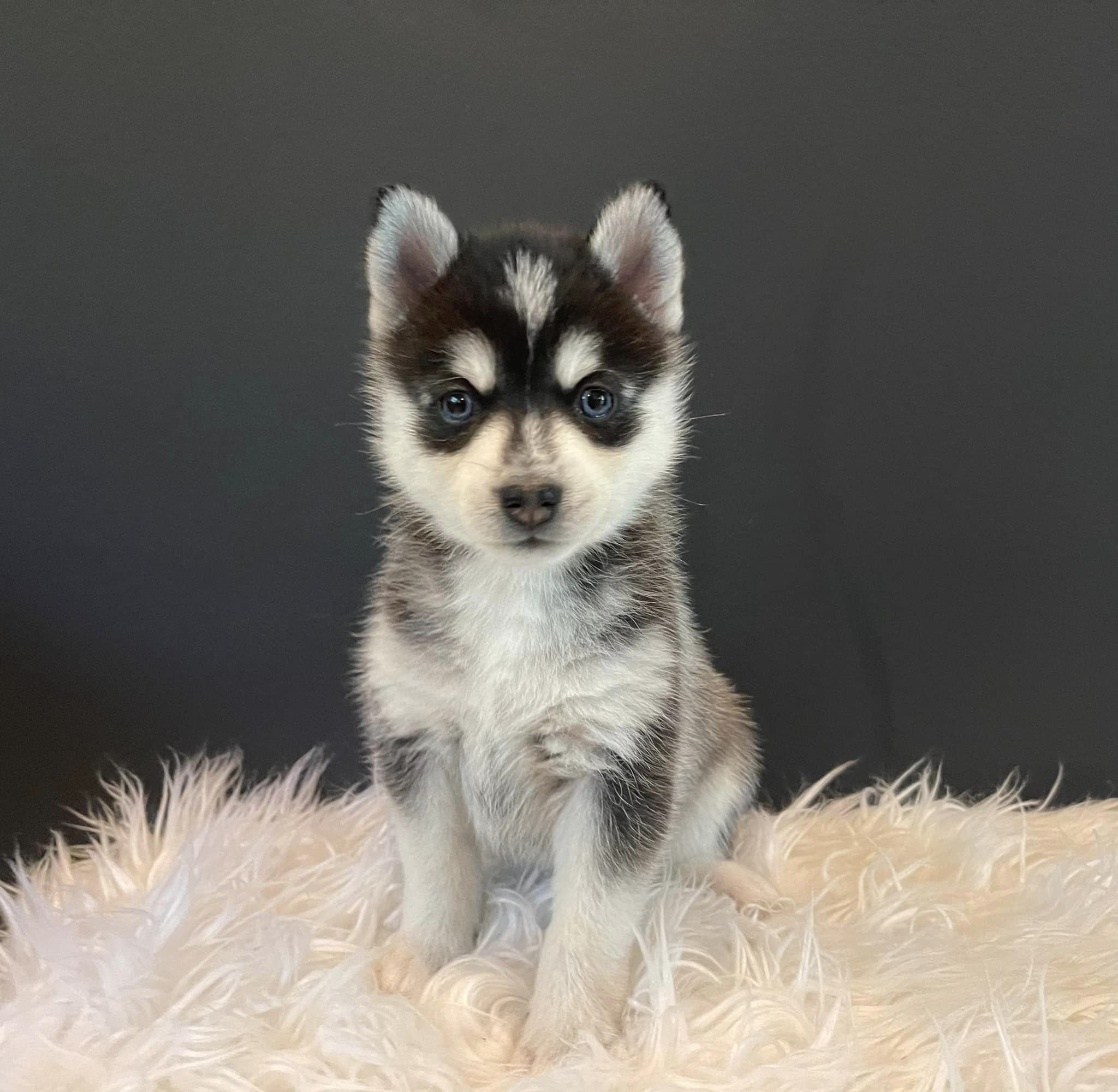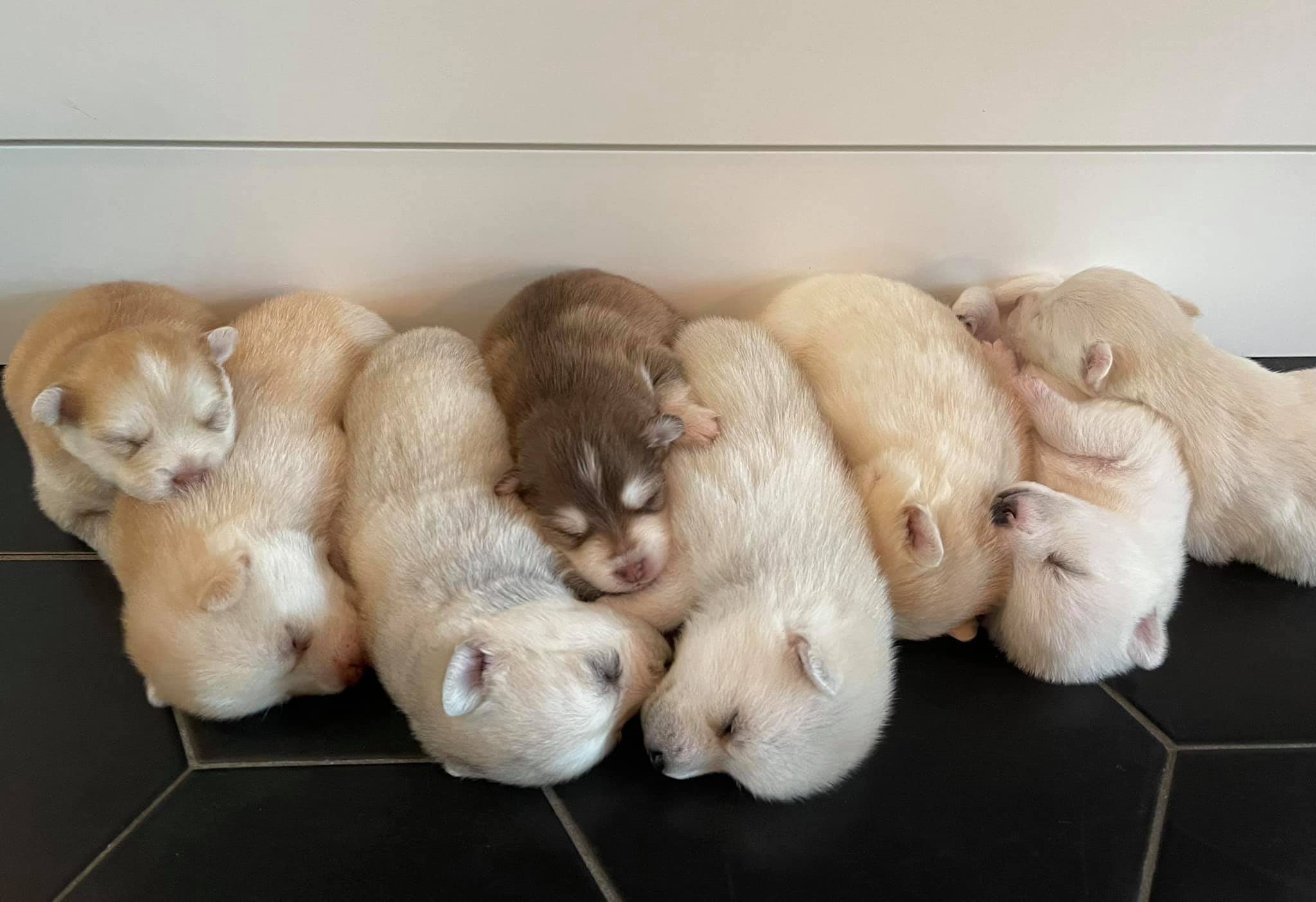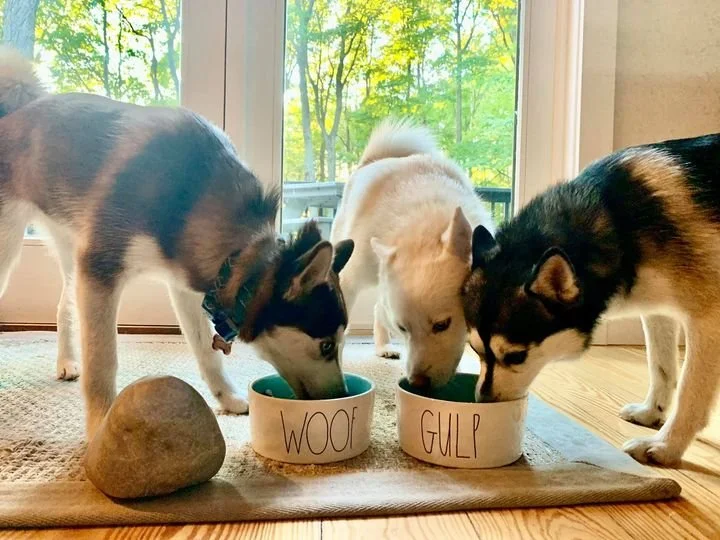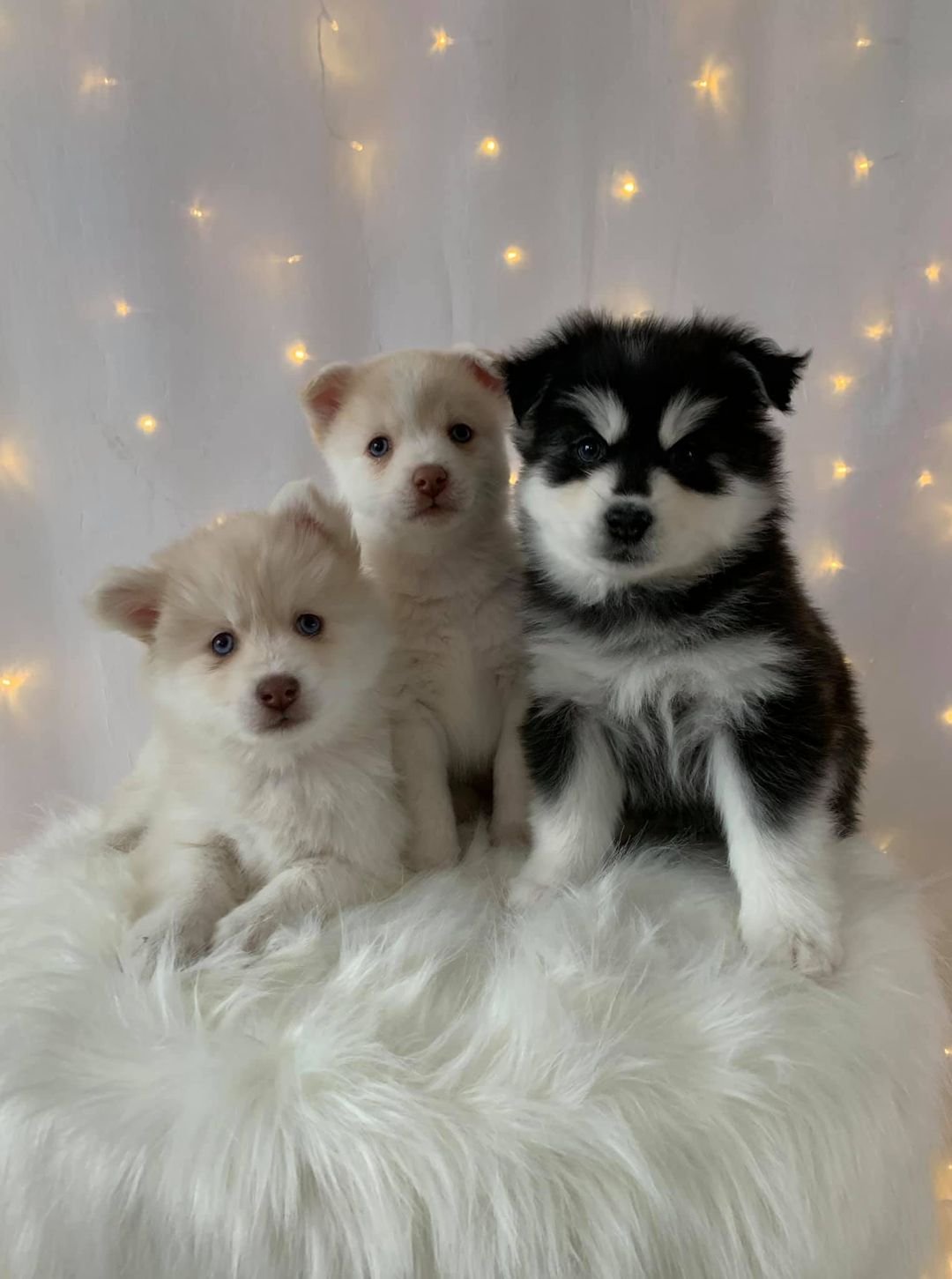
Pomskies: pint-sized bundles of playfulness
About Pomskies
This delightful breed of dog makes a wonderful addition to any loving family or active adult owner. Understanding Pomsky traits, personality and needs will make your decision to adopt a Pomsky easy.
Personality
Pomskies are a delightful crossbreed of Siberian Husky and a Pomeranian. Much smaller than a Husky, this pint-sized bundle of joy is often mistaken for a Husky puppy even when full grown. Pomskies are playful, energetic and intelligent. They love family life and children so they will become one of the family very quickly. They are incredibly sweet and affectionate, so be prepared to cuddle them. Don’t be afraid to let them sleep across your bed at night.
Appearance
Pomskies weigh 10-24 pounds and reaches a length of 15 to 18 inches in length. They resemble Siberian Huskies with their soft, thick coat, curled tail, fur colors and markings, but not their size. Coat colors range from white and cream to light or dark brown, light or dark grey, and black with a wide array of facial markings not found in other breeds.
Ideal Home
Pomskies are a perfect fit for families with children due to their playfulness and affectionate nature. They also thrive with an attentive solo owner. They are well-suited for condo or apartment life because of their size. Although Pomskies love the outside in any kind of weather, they are not suited for living outside. They need to be inside with the family.
Getting Along with Others
Although the Pomsky is loving and affectionate with everyone, they do latch on to one person. They get along well with other dogs and pets. Pomskies love both adults and children. A Pomsky can match the energy and stamina of almost any child making wonderful playmates.
Need for Attention
Pomskies need lots of attention, affection and exercise. Regular walking and active play will prevent potential destructive behavior and excessive barking. Don’t be surprised when your pomsky puppy zooms around the house or yard, sometimes barking excessively. Minimize zooming behavior with lots of playtime, exercise and training.
Safety
Keeping your Pomsky on a lease when outside is a good idea since their husky nature gives them the desire to chase small critters out in the woods. A large fenced-in yard is ideal for a Pomsky. Pomskies respond very well to electric fences. They are very intelligent and learn quickly how to live within the boundaries. Puppy proofing your home with gates, restricted areas and a crate will keep your puppy, and possessions safe during the puppy stage.
Potential Problems
Pomsky Puppies may exhibit anxiety symptoms when left alone for too long or have not had enough exercise. Symptoms may include excessive barking or chewing on household items such as furniture. Provide puppy-safe chew toys as an alternative. Give your puppy lots of attention, play time in the yard or go for walks.
AKC Breed
The Pomsky is not a registered breed of the American Kennel Club (AKC) because it is a crossbreed. The Pomsky breed is very new to the USA with the first litter being introduced in 2012. Pomskies became a sensation almost immediately and is currently a breed in high demand.
Barking
Pomskies, like other dogs, will bark occasionally such as when a newcomer approaches the home. However, Pomskies don’t bark like other small dogs, rather they have the “husky talk” or “husky growl” when they want to communicate. To prevent your Pomsky from barking excessively give it lots of love, attention and regular exercise such a play time in the yard with children or other animals.
Shedding
Pomskies are seasonal shedders, they shed in the spring and again in the fall; however, they do not shed like their ancestor the husky or like a malemute. Regular brushing will keep fur shedding to a minimum. For people who are allergic to dogs fur, a pomsky will not be the exception. They are not considered a hypoallergenic dog.
Pomskies and Water
Pomskies are natural swimmers and love the water. We take our Pomsky puppies to the beach in the warmer months to expose them to water, so don’t be afraid to take them to the lake or beach near you. Don’t be surprised if your pomsky jumps in your pool.
Life Expectancy
Unlike larger dogs, Pomskies have a longer life span typically living 13 to 15 years.
Energy
Pomskies are playful and energetic but are not as energetic as their ancestor the husky. Huskies require significant time to burn off their energy especially outside and in the winter months. Pomskies, on the other hand, are less demanding of the need to run outdoors. Pomskies do need daily exercise and play time to avoid boredom. A large fenced in yard (or electric fence) where your pomsky can run and play with children or other animals is an alternative to daily walks.
Adult Pomskies
Adult Pomskies can be quite small. Our male Pomsky weights only 10 pounds while our females weight 20 and 24 pounds. People often mistake an adult Pomsky as a husky puppy.
West Bay Pomsky Puppy Traits
In general, Pomskies exhibit many of the traits described above; however, West Bay Pomsky puppies are not typical. Our dogs do not exhibit excessive barking, destructive behavior, and are not overly energetic or “hyper” as some can be. All Pomskies are highly intelligent and easy to train; ours are no exception. You and your family will enjoy the sweet and highly affectionate nature of our Pomskies.











